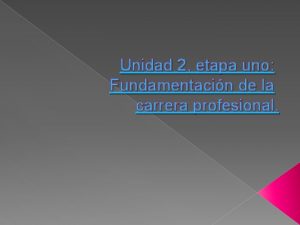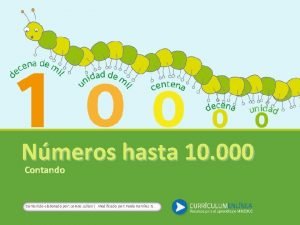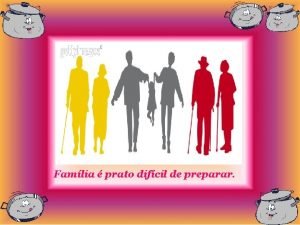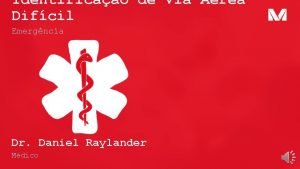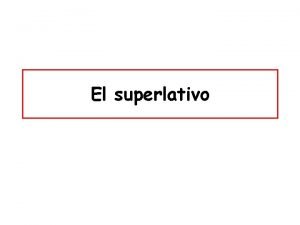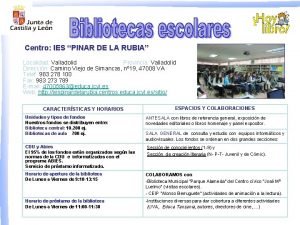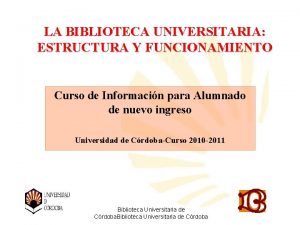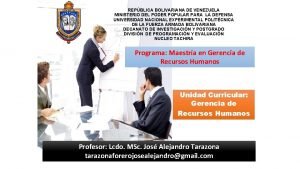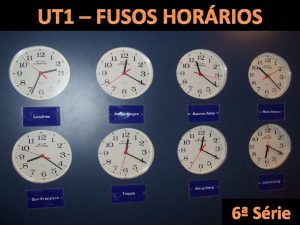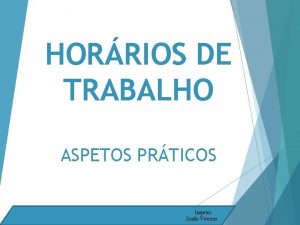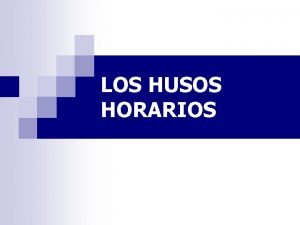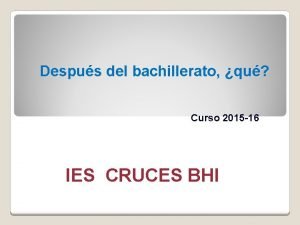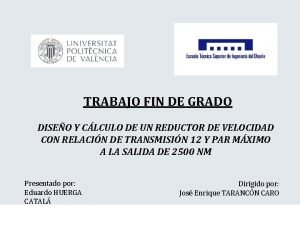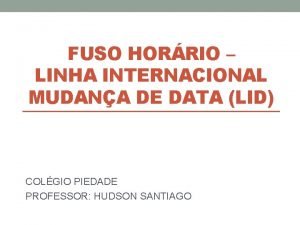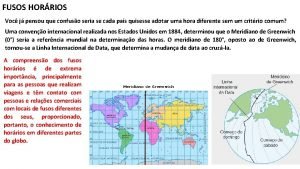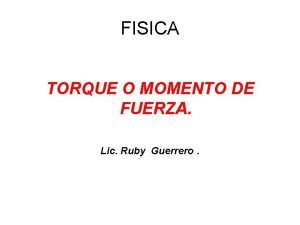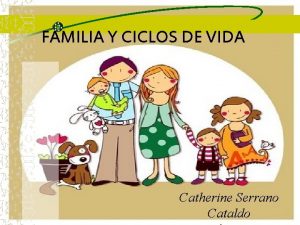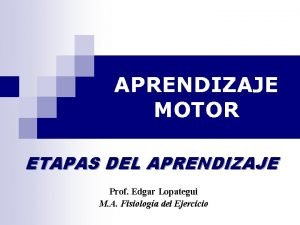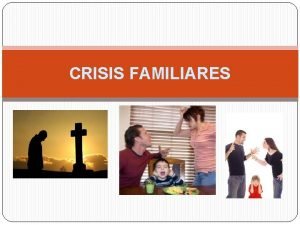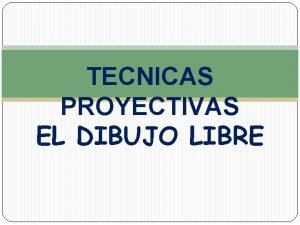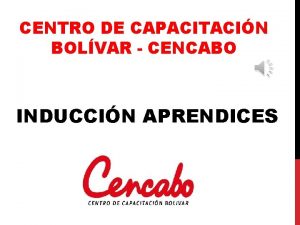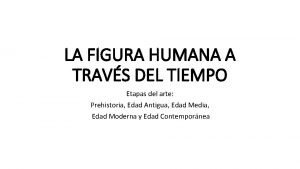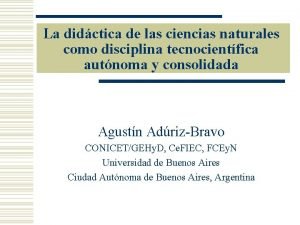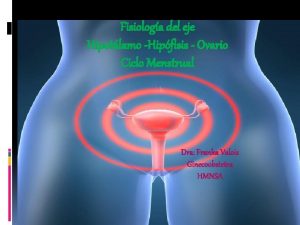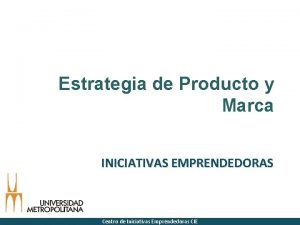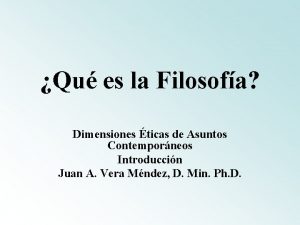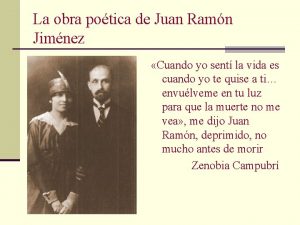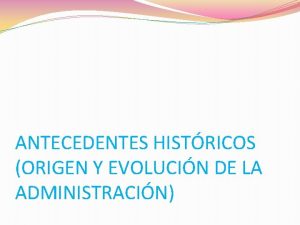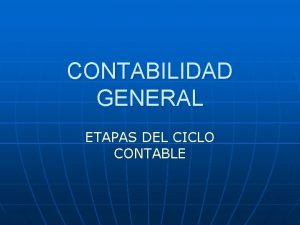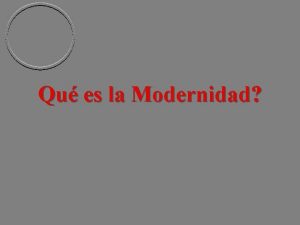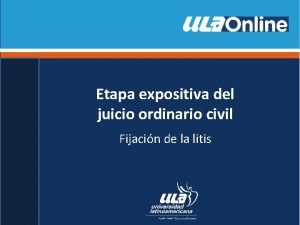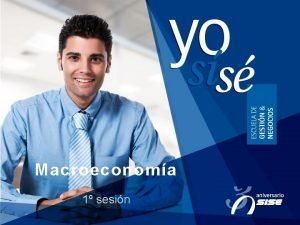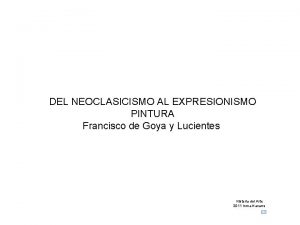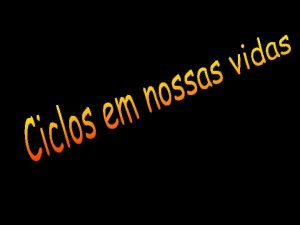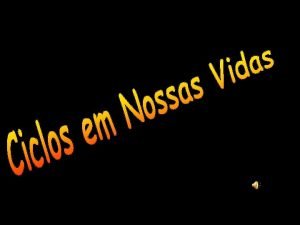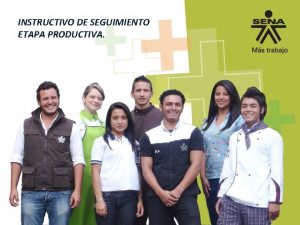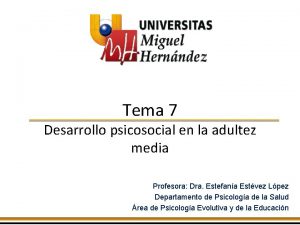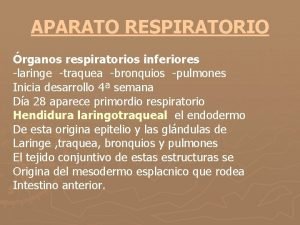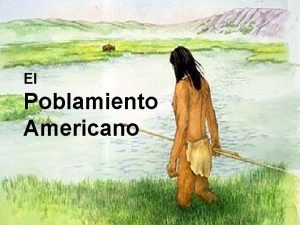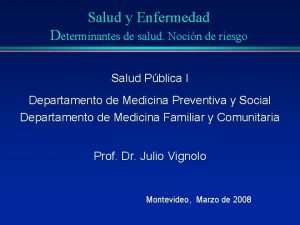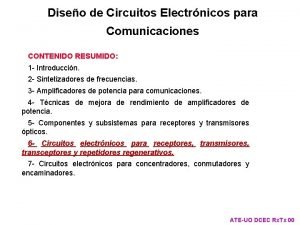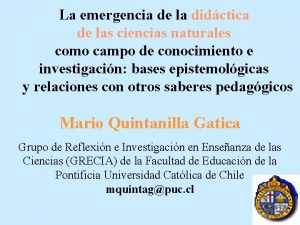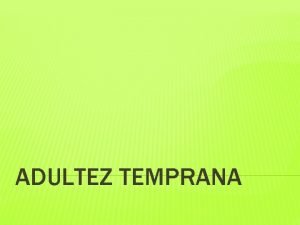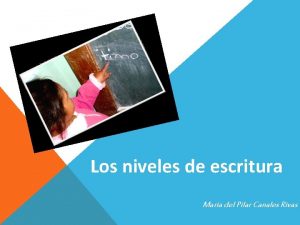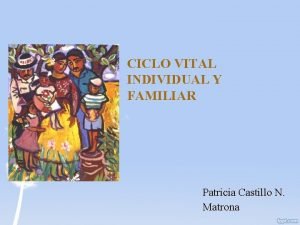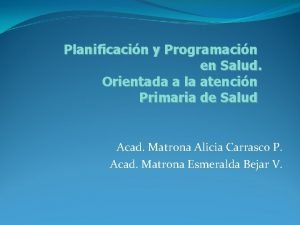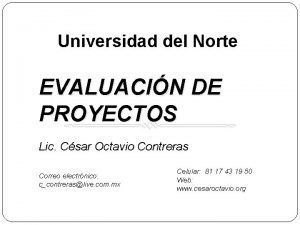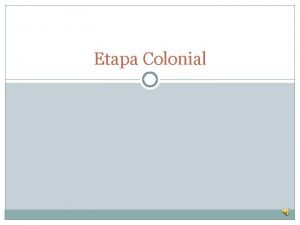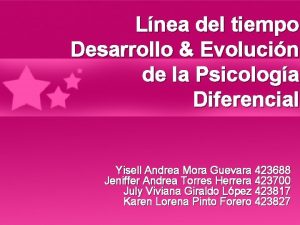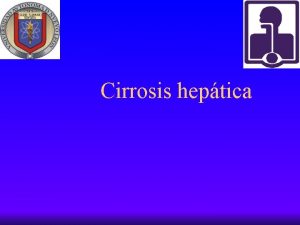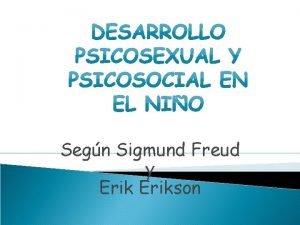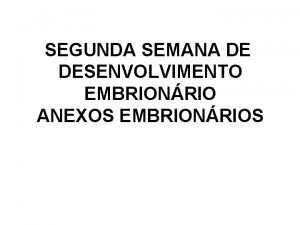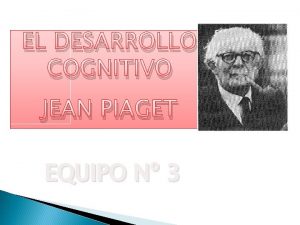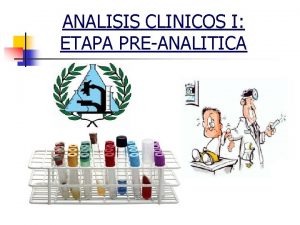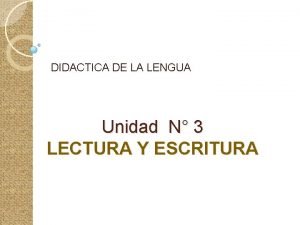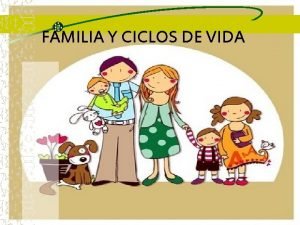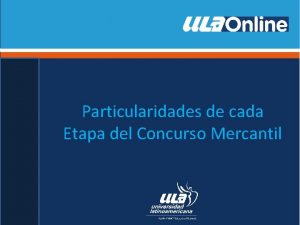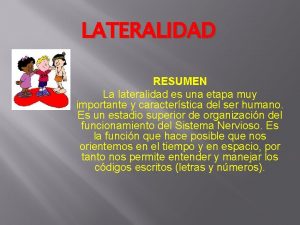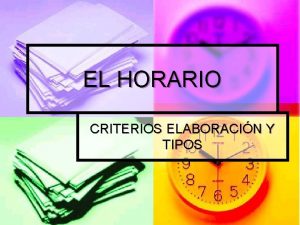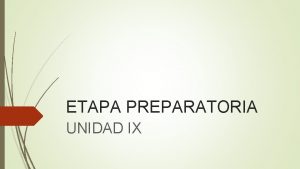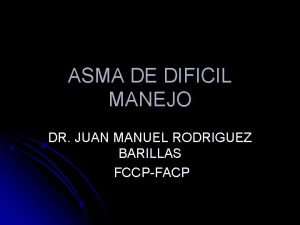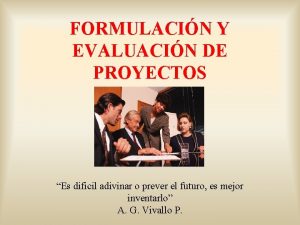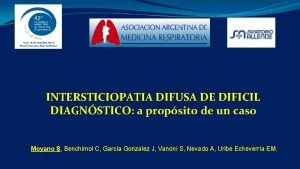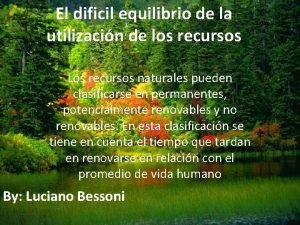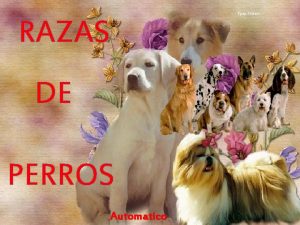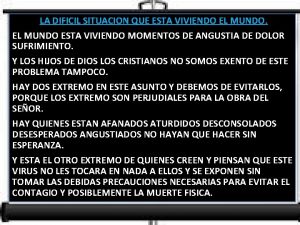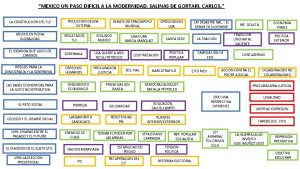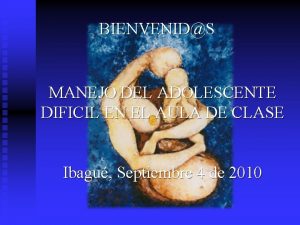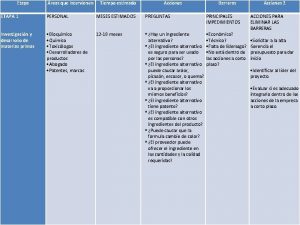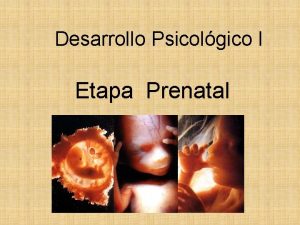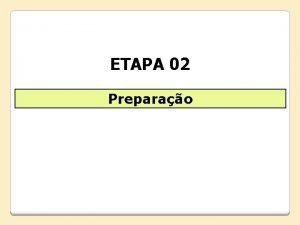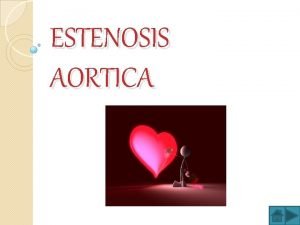Unidad 2 Etapa 2 Un Horario Dificil Unidad
























































































- Slides: 88

Unidad 2 Etapa 2 - Un Horario Dificil! Unidad Dos: El colegio Communication I can discuss school schedules. I can tell time. I can tell at what time something is going to occur. I can discuss the location of people and places. I can discuss where I and others are going. I can request food Grammar I can distinguish between the uses of ser and estar. I can conjugate and use the verb ir and the expression ir + a + infinitive. I can use interrogative words. Culture I can compare/contrast U. S. school systems and those in Hispanic countries.

Unidad 2 Etapa 2 - Un Horario Dificil! Diciendo la hora (Telling the time) - Page 41 1. What time is it? ¿Qué hora es? 2. At what time. . . ? ¿A qué hora. . . ? 3. It is. . . Es la/son las 4. At. . . A la/a las 5. quarter (15 minutes) cuarto 6. half (30 minutes) media 7. and y 8. minus, less menos

Unidad 2 Etapa 2 - Un Horario Dificil! 9. in the morning, AM de la mañana 10. in the afternoon, PM de la tarde 11. in the evening, at night, PM de la noche 12. during the morning por la mañana 13. during the afternoon por la tarde 14. during the evening, at night por la noche 15. clock, watch el reloj 16. midnight la medianoche 17. noon el mediodía

martes, 19 de enero 2016 • El Campanero – Fill in the blank with the correct form of “ser”: – Ella de California. – Los chicos rubios. – Yo simpático. – Tú maestro. • Culture Question – ¿Cómo se traduce Costa Rica en Inglés?

martes, 19 de enero 2016 • El Campanero – Fill in the blank with the correct form of “ser”: – Ella es de California. – Los chicos son rubios. – Yo soy simpático. – Tú eres maestro. • Culture Question – ¿Cómo se traduce Costa Rica en Inglés? Respuesta: Rich Coast

martes, 19 de enero 2016 Agenda El Campanero/Culture Question Rules and procedures Class requirements/supplies Organize journals/Return papers Apuntes: IR

¿Adónde vas? Talking about where you and others go during free time (pg. 111) 7

El Verbo “IR” Apuntes de IR: • • IR es el infinitivo No hay una raíz En español IR significa “to go” It has many uses: a. Destination = where someone is going b. Transportation = means by which to go c. Purpose = in order to do an activity 8

El Presente del Verbo IR: (irregular in the present tense) Yo voy Tú vas Usted, él, ella va Nosotros vamos Ustedes, ellos, ellas van 9

I. DESTINATION The verb IR is generally followed by the preposition a (to) (or the contraction al = to the) Yo voy Tú vas Usted, él, ella va Nosotros vamos Ustedes, ellos, ellas van + a al la fiesta + femenine parque masculine (a+el) 10

¿Adónde vamos? Adónde is a question word = to where. ¿Adónde + ir ? ¿Adónde vas mañana ? (To) Where are you going tomorrow? Mañana voy al cine con amigos. 11

¿Adónde? no es igual a ¿dónde? I. Destination with IR: “¿Adónde va Pedro? ” Pedro va a la biblioteca. II. Location with ESTAR: “¿Dónde está Pedro? ” Pedro está en la biblioteca. 12

Por ejemplo: • ¿Adónde vas ahora? Yo voy a la clase de inglés. Where are you going now? I am going to English class. • ¿Adónde va Pablo después de clases hoy? Pablo va a la biblioteca para estudiar. (para + vb. inf. = in order to do…) Pablo is going to the library in order to study. • ¿Adónde van Uds. el viernes? Vamos al centro comercial para ver una película. 13

¿Adónde vas mañana? : a + el = al Yo voy al médico. . al centro comercial. . al parque. . al cine. . al café. . al hospital. . al restaurante. . al supermercado. … al gimnasio 14

¿Adónde van ustedes? : a + la = a la Nosotros vamos a la escuela. . a la biblioteca. . a la ciudad. . a la oficina. . a casa. . a la piscina. . a la librería. . a la playa. 15

¿Adónde vas mañana? : Yo voy al cine. I’m going to the movie theater. 16

¿Adónde va Juan hoy? : El va a escuela. He is going to school. 17

¿Adónde va Ud. este fin de semana? : Yo voy a la fiesta. I’m going to the party. 18

¿Adónde van las chicas en el tiempo libre? : Ellas van al centro comercial. They go to the mall. 19

20

¿Adónde va? : I. Form a complete sentence stating where each person is going: 1. 2. 3. 4. 5. Yo / ir / el baile Tú / ir / el concierto Mi amiga y yo / ir / la piscina Ana y Juan / ir / la tienda Enrique / ir / el gimnasio 21

¿Adónde va? : II. Form a complete sentence stating where each person is going based on the situation: 1. Mario necesita comprar unos libros. 2. Miguel y Anita quieren montar en bici. 3. Me gusta ver las películas con mis amigos. 4. Mis amigos y yo pasamos un rato y tomamos un refresco. 5. Necesito estudiar para los examenes. 22

¿Adónde va? : III. Form four questions using the time expressions to ask where people are going. Interview 5 people and write their answers in el/ella form: 1. 2. 3. 4. 5. Después de clases hoy Este fin de semana En el tiempo libre De vacaciones Antes de regresar a casa mañana 23

II. IR FOR DESTINATION WITH PURPOSE: ¿ADÓNDE VAS? + ¿QUÉ VAS A HACER? Ir + a + place + para + verb inf. =going somewhere in order to do something Ex: ¿Adónde vas para mandar las cartas? Yo voy al correo para mandar las cartas. Ex: ¿Adónde van los chicos para nadar? Ellos van a la piscina para nadar. Ex: ¿Va Marta a la tienda para trabajar hoy? Si, ella va a la tienda para trabajar. 24

Practice: Associate a verb with a place and create a complete sent. in Spanish: ¿Adónde va? ¿Qué va a hacer? 1. 2. 3. 4. 5. 6. 7. 8. Cecilia – la piscina Gustavo y Tomas – el centro comercial Carlos y yo – el parque Yo – el supermercado Linda y Eva – la fiesta Tú – el gimnasio Ud. – a casa Yo – la clase de español 25

¿Adónde vas? ¿Qué vas a hacer? Voy al cine para ver una película. 26

¿Adónde va Miguel? ¿Qué va a hacer? Miguel va al parque para pasar un rato con amigos. 27

¿Adónde van Uds. ? ¿Qué van a hacer? Vamos al correo para comprar estampillas y mandar cartas. 28

¿Adónde vas? ¿Qué vas a hacer? Voy a la tienda de música para comprar música y discos compactos. 29

¿Adónde van las chicas? ¿Qué va a hacer? Ellas van al café para tomar un refresco y hablar con amigos. 30

¿Adónde vas? ¿Qué vas a hacer? Voy a la tienda de ropa para comprar ropa de moda. 31

cuando estás muy enfermo/a Voy al hospital cuando estoy muy enfermo/a. 32

ir en avión a Los Angeles Anita va al aeropuerto para ir en avión a Los Angeles. 33

IV. IR FOR EXPRESSING THE NEAR FUTURE – PLANNING: ¿QUÉ VAS A HACER? IR + a + verb inf. = to be going to do something in the future Ex: ¿Qué vas a hacer después de clases hoy? Yo voy a estudiar en la biblioteca. Ex: ¿Qué va a hacer Marcos el viernes? El va a caminar en el parque. Ex: ¿Van a ver Uds. una película en el cine este fin de semana? Si, nosotros vamos a ver una película en el cine. 34

Practice: Change the following present tense sent. from what each person regularly does during the week to state what each person is going to do next week: ex: Los lunes, Lucia escucha la radio. = El lunes, Lucia va a escuchar la radio. 1. 2. 3. 4. Los jueves, Ricardo practica el piano. Los miércoles, mi madre y mi abuela cocinan los tacos para la cena. Los viernes, nosotros pasamos el rato al centro. Los martes, yo saco la basura después de la cena. 35

II. Ir for transportation ¿Cómo vamos? (How do we get there? ) Ir + en + mode of transportation: Yo voy en coche = I go by car taxi = by taxi autobus = by bus tren/metro = by train/subway avión = by plain bicicleta = by bike (a) pie = by foot 36

¿Cómo vamos? We go by car to the store. Nosotros vamos en coche a la tienda. 37

¿Cómo van ellos? They go by bus to school. Ellos van en autobús a escuela. 38

¿Cómo vas tú? I go by bicycle to the park. Yo voy en bicicleta al parque. 39

miercoles, 21 de enero 2015 • El Campanero Write the correct form of IR: 1. Carlos ___ a la escuela todos los dias. 2. Yo ___ a la clase de matemáticas a las 10: 00. 3. Rosa y María ____ a la cafeteria siempre. 4. Tú nunca _____ al parque • Culture Question – ¿Cuál es la capital de Nicaragua?

miercoles, 21 de enero 2015 • El Campanero Write the correct form of IR: 1. Carlos va a la escuela todos los dias. 2. Yo voy a la clase de matemáticas a las 10: 00. van a la cafeteria siempre. Tú nunca vas al parque 3. Rosa y María 4. • Culture Question – ¿Cuál es la capital de Nicaragua? Respuesta: Managua

miercoles, 21 de enero 2015 Agenda El Campanero/Culture Question Page 54 WS: Práctica—Tener ganas de

Telling Time (Cómo decir la hora) E l r e l o j http: //youtu. be/y. AI 4 Gulvrk. I http: //youtu. be/f. Bfda. BXTHm 0 http: //youtu. be/xf-1 sf. Qo 6 Bo

When we ask what time it is in Spanish, we say “¿Qué hora es? ” Some people also say “¿Qué horas son? ”

¿Qué hora es? The third-person singular of ser is used with one o’clock since it is just one hour (hora). Es la una. The singular definite article is used for the same reason. All hours of the day are feminine in Spanish. 10 11 12 1 2 9 3 8 7 6 5 4

¿Qué hora es? The third-person plural of ser is used with all hours after one o’clock. Son las dos. Likewise, the plural definite article is used for all hours after one o’clock. 10 11 12 1 2 3 9 8 7 6 5 4

¿Qué hora es? Son las tres. (etc. ) The formula for all hours after one is Son las + the hour. 10 11 12 1 2 3 9 8 7 6 5 4

¿Qué hora es? Es la una y diez. 10 11 12 1 2 9 To express minutes after the hour, we simply add y and the number of minutes. 3 8 7 6 5 4

¿Qué hora es? Son las tres y quince. or. . . Son las tres y cuarto. Cuarto is a masculine noun that means a quarter (of an hour). 10 11 12 1 2 9 3 8 7 6 5 4

¿Qué hora es? Son las cuatro y treinta. or. . . Son las cuatro y media. Medio is an adjective that means half. It is used in the feminine singular when telling time, since it modifies the unexpressed noun hora. 10 11 12 1 2 9 3 8 7 6 5 4

¿Qué hora es? Son las cinco y cuarenta. 11 10 or. . . 9 Son las seis menos 8 veinte. 7 After the halfway point of a given hour, Spanish gives us the option of stating the next hour minus (menos) a number of minutes. 12 1 2 3 6 5 4

¿Qué hora es? Son las siete en punto. En punto literally means “on the dot, ” and is used to stress that an exact hour is being expressed, with no minutes before or after. 10 11 12 1 2 9 3 8 7 6 5 4

¿Qué hora es? Son las nueve menos cinco. or. . . Son las ocho y cincuenta y cinco. 10 11 12 1 2 9 3 8 7 6 5 4

¿Qué hora es? Son las doce, (la) medianoche. or. . . Es medianoche. Note: Some Spanish speakers say “Son las doce de la noche”.

¿Qué hora es? Son las doce, (el) mediodía. or. . . Es mediodía. Note: Some Spanish speakers say “Son las doce del día”.

Expressing AM time ¿Qué hora es? Es medianoche. Remember that midnight is 12: 00 am. 10 11 12 1 2 9 3 8 7 6 5 4

Expressing AM time ¿Qué hora es? Es la una y veinticinco de la mañana (de la madrugada*). Notice that in Spanish we say “of the morning” rather than “in the morning. ” 10 11 12 1 2 9 3 8 7 6 5 4 *de la madrugada can be used instead of de la mañana for the very early, or “wee” hours, of the morning.

¿Qué hora es? AM Son las tres de la mañana. 10 11 12 1 2 3 9 8 7 6 5 4

¿Qué hora es? AM Son las cinco y cuarto de la mañana. 10 11 12 1 2 9 3 8 7 6 5 4

¿Qué hora es? AM Son las seis de la mañana. 10 11 12 1 2 9 3 8 7 6 5 4

¿Qué hora es? AM Son las once y media de la mañana. 10 11 12 1 2 3 9 8 7 6 5 4

Expressing PM time ¿Qué hora es? Es mediodía. Remember that noon is 12: 00 pm. 10 11 12 1 2 9 3 8 7 6 5 4

Expressing PM time ¿Qué hora es? Son las dos de la tarde. Tarde is used for afternoon and evening hours. Notice that, again, we say “of the afternoon. ” 10 11 12 1 2 3 9 8 7 6 5 4

¿Qué hora es? PM Son las cuatro y veinte de la tarde. 10 11 12 1 2 9 3 8 7 6 5 4

¿Qué hora es? PM Son las seis de la tarde = afternoon tarde = evening Again, tarde is used to express evening as well as afternoon hours. 10 11 12 1 2 9 3 8 7 6 5 4

¿Qué hora es? PM Son las nueve de la noche. Normally, after sundown we begin to say de la noche; however, this is somewhat variable, as it is in English. Some feel that 7: 00 is a good dividing line. 10 11 12 1 2 9 3 8 7 6 5 4

¿Qué hora es? PM Son las once menos quince (o cuarto) de la noche. Son las diez y cuarenta y cinco de la noche. 10 11 12 1 2 9 3 8 7 6 5 4

¿Qué hora es? PM Son las ocho y media de la noche. 10 11 12 1 2 9 3 8 7 6 5 4

1. 10 11 12 1 Un poco de práctica ¿Qué hora es? 8 AM 2 9 3 7 6 5 2. 10 3. 10 9 1 2 (On the dot) 8 7 6 2 3 8 12 1 9 4 11 11 12 5 4 3 7 6 5 4

4. 10 11 12 Un poco de práctica ¿Qué hora es? 1 8 PM 2 9 3 7 6 5 5. 10 6. 1 2 9 3 8 7 6 1 2 3 8 10 12 9 4 11 12 11 5 4 7 6 5 4

¿A qué hora es. . . ? When we talk about the time at which an event begins, we must say “At what time (hour) is. . . ? ” To answer, we must say “Es a la una, ” or “Es a las dos, ” etc. ¿A qué hora es la clase de español?

Por la mañana, etc. A general reference to a span of time, as opposed to a specific hour, is expressed with the preposition por. —¿Tienes clases por la mañana? —Sí, todas mis clases son por la mañana, y estudio por la tarde. Generalmente, ¿cuándo estudias tú, por la mañana, por la tarde o por la noche?

The 24 -hour clock In many Spanish-speaking countries, the 24 -hour clock is used for schedules and official timekeeping. The zero hour (00: 00) is equivalent to midnight, and 12: 00 is noon. 13: 00– 24: 00 are the P. M. hours. To convert from the 24 -hour clock, subtract twelve hours from hours 13: 00 and above. 21: 00 (21. 00, 21, 00) = las nueve de la noche 16: 30 (16. 30, 16, 30) = las cuatro y media de la tarde The punctuation used in giving the time varies from country to country. Sometimes a period or comma is used as well as the colon, which is normally used in English.

jueves, 22 de enero 2015 • El Campanero Translate the following sentences: 1. It’s 8: 00 p. m. 2. It’s 3: 25 p. m. 3. It’s 12: 15 a. m. 4. It’s 9: 45 a. m. 5. It’s 4: 30 p. m. • Culture Question – ¿Qué indígenas vivian en Centroamérica?

jueves, 22 de enero 2015 • El Campanero Translate the following sentences: 1. 2. 3. 4. It’s 8: 00 p. m. Son las ocho de la noche It’s 3: 25 p. m. Son las tres y veinticindo de la tarde It’s 1: 15 a. m. Es la una y cuarto (quince) de la mañana It’s 9: 45 a. m. Son las nueve y cuarenta y cinco de la mañana 5. It’s 4: 30 p. m. Son las cuatro y media (treinta) de la tarde • Culture Question – ¿Qué indígenas vivian en Centroamérica? (Los Mayas)

A Practicar!!! Practice telling time in Spanish.

In both English and Spanish, the verb to be (ser) and numbers are used to tell time. Copyright © 2008 Vista Higher Learning. All rights reserved. 1. 4 -77

u To ask what time it is, use ¿Qué hora es? When telling time, use es + la with una and son + las with all other hours. Copyright © 2008 Vista Higher Learning. All rights reserved. 1. 4 -78

u As in English, you express time from the hour to the half-hour in Spanish by adding minutes. Copyright © 2008 Vista Higher Learning. All rights reserved. 1. 4 -79

u You may use either y cuarto or y quince to express fifteen minutes or quarter past the hour. For thirty minutes or half past the hour, you may use either y media or y treinta. Copyright © 2008 Vista Higher Learning. All rights reserved. 1. 4 -80

u You express time from the half-hour to the hour in Spanish by subtracting minutes or a portion of an hour from the next hour. Copyright © 2008 Vista Higher Learning. All rights reserved. 1. 4 -81

u To ask at what time a particular event takes place, use the phrase ¿A qué hora (…)? To state at what time something takes place, use the construction a la(s) + time. Copyright © 2008 Vista Higher Learning. All rights reserved. 1. 4 -82

u Here are some useful words and phrases associated with telling time. Copyright © 2008 Vista Higher Learning. All rights reserved. 1. 4 -83

Practice telling time by completing these sentences. The first item has been done for you. 1. (1: 00 a. m. ) Es la ______ de la mañana. una 2. (2: 50 a. m. ) Son las tres _____ diez de la mañana. 3. (4: 15 p. m. ) Son las cuatro y _____ de la tarde. 4. (8: 30 p. m. ) Son las ocho y _____ de la noche. 5. (9: 15 a. m. ) Son las nueve y quince de la _____. 6. (12: 00 p. m. ) Es el _____. 7. (6: 00 a. m. ) Son las seis de la _____. Copyright © 2008 Vista Higher Learning. All rights reserved. 1. 4 -84

Practice telling time by completing these sentences. (cont'd) 8. (4: 05 p. m. ) Son las cuatro y cinco de la _____. 9. (12: 00 a. m. ) Es la _____. 10. (3: 45 a. m. ) Son las cuatro menos _____ de la mañana. 11. (2: 15 a. m. ) Son las _____ y cuarto de la mañana. 12. (1: 25 p. m. ) Es la una y _____ de la tarde. 13. (6: 50 a. m. ) Son las _____ menos diez de la mañana. 14. (10: 40 p. m. ) Son las once menos veinte de la _____. Copyright © 2008 Vista Higher Learning. All rights reserved. 1. 4 -85

viernes, 23 de enero 2015 • El Campanero – Translate to Spanish using adjective rules: – The white pants – The blue shoes – The yellow jacket – The red hat • Culture Question – ¿Qué país de centroamérica conecta a sudamérica?

viernes, 23 de enero 2015 • El Campanero – Translate to Spanish using adjective rules: – The white pants—los pantalones blancos – The blue shoes—los zapatos azules – The yellow jacket—la chaqueta amarilla – The red hat—el sombrero rojo • Culture Question – ¿Qué país de centroamérica conecta a sudamérica?

Telling time notes and practice sheets.
 Unidad 2 etapa 1
Unidad 2 etapa 1 Unidad 3 etapa 3 answers
Unidad 3 etapa 3 answers Unidades de millar centenas decenas unidades
Unidades de millar centenas decenas unidades Familia prato dificil de preparar
Familia prato dificil de preparar Palabras que terminen en mer
Palabras que terminen en mer Moans via aerea dificil
Moans via aerea dificil Aquieta minh'alma faz meu coração
Aquieta minh'alma faz meu coração Alineacion de ejes intubacion
Alineacion de ejes intubacion Descriptive adjective
Descriptive adjective Protocoale clinice pentru ingrijiri paliative
Protocoale clinice pentru ingrijiri paliative Grad superlativ relativ
Grad superlativ relativ Se que es dificil perdonar cuando no sabes amar
Se que es dificil perdonar cuando no sabes amar Pinar de la rubia valladolid
Pinar de la rubia valladolid Catalogo mezquita uco
Catalogo mezquita uco Pago de guardería según lottt
Pago de guardería según lottt Planisferio husos horarios
Planisferio husos horarios Mapa horário de trabalho
Mapa horário de trabalho Husos horario
Husos horario Ehu selectividad horario
Ehu selectividad horario Instituto ferrari valladolid
Instituto ferrari valladolid Horario antihorario
Horario antihorario Linha de mudança de data
Linha de mudança de data Que confuso
Que confuso Horario usal derecho
Horario usal derecho Fuso horario
Fuso horario Webmail ugr estudiantes
Webmail ugr estudiantes Inacua la canaleja horario
Inacua la canaleja horario Calcular el torque
Calcular el torque Horarios upv
Horarios upv Etapa incorporativa
Etapa incorporativa Etapas del aprendizaje motor
Etapas del aprendizaje motor Gametogenesis femenina y masculina
Gametogenesis femenina y masculina Tipos de crisis paranormativas
Tipos de crisis paranormativas Tipos de mecanismo de defensa
Tipos de mecanismo de defensa Adultul tanar
Adultul tanar Cencabo telefonos
Cencabo telefonos Etapas de la figura humana
Etapas de la figura humana Etapa adisciplinar
Etapa adisciplinar Hipotlamo
Hipotlamo Productos en etapa de introducción
Productos en etapa de introducción La filosofía segun aristoteles
La filosofía segun aristoteles Poemas agrestes etapa
Poemas agrestes etapa Etapa primitiva de la administración
Etapa primitiva de la administración Etapas de un ciclo contable
Etapas de un ciclo contable Etapas de la premodernidad
Etapas de la premodernidad Primera etapa del desarrollo
Primera etapa del desarrollo Etapa canalicular
Etapa canalicular Ciclo de vida de duvall
Ciclo de vida de duvall Reconvención
Reconvención Etapa pre cientifica
Etapa pre cientifica Goya neoclasicismo
Goya neoclasicismo Sempre é preciso saber quando uma etapa chega ao final
Sempre é preciso saber quando uma etapa chega ao final Sempre é preciso saber quando uma etapa chega ao final
Sempre é preciso saber quando uma etapa chega ao final Seguimiento etapa productiva sena
Seguimiento etapa productiva sena Adultez media desarrollo psicosocial
Adultez media desarrollo psicosocial Etapa de la adolescencia
Etapa de la adolescencia Surfantante
Surfantante Hardlicka
Hardlicka Psicosociall
Psicosociall Fase 3: contextualización. comparo para mejorar
Fase 3: contextualización. comparo para mejorar Desarrollo cognitivo en la etapa prenatal
Desarrollo cognitivo en la etapa prenatal Etapa operacional
Etapa operacional Etapa amplificadora
Etapa amplificadora Etapa de latencia
Etapa de latencia Situaciones de enseñanza en ciencias naturales
Situaciones de enseñanza en ciencias naturales Que es la adultez temprana
Que es la adultez temprana Niveles de escritura ejemplos
Niveles de escritura ejemplos Etapa nuclear de la adolescencia
Etapa nuclear de la adolescencia Ciclo vital individual y familiar
Ciclo vital individual y familiar Etapa determinativa
Etapa determinativa Surco traqueoesofagico
Surco traqueoesofagico Etapas de una narracion
Etapas de una narracion Etapa de preinversión
Etapa de preinversión Etapa de la colonizacion
Etapa de la colonizacion Charles sperman
Charles sperman Clasificacion de ascitis
Clasificacion de ascitis Zona erógena
Zona erógena Epiblasto e hipoblasto
Epiblasto e hipoblasto Baby predental
Baby predental Esquema de jean piaget
Esquema de jean piaget Objetivos de laboratorio clinico
Objetivos de laboratorio clinico Etapa silábica alfabética
Etapa silábica alfabética Etapa gongorina
Etapa gongorina Etapa prenatal
Etapa prenatal Etapa incorporativa
Etapa incorporativa Etapa veterana del automovil
Etapa veterana del automovil Que es un campo lexico
Que es un campo lexico Etapas de la conciliacion
Etapas de la conciliacion Etapa del cuerpo vivido
Etapa del cuerpo vivido
